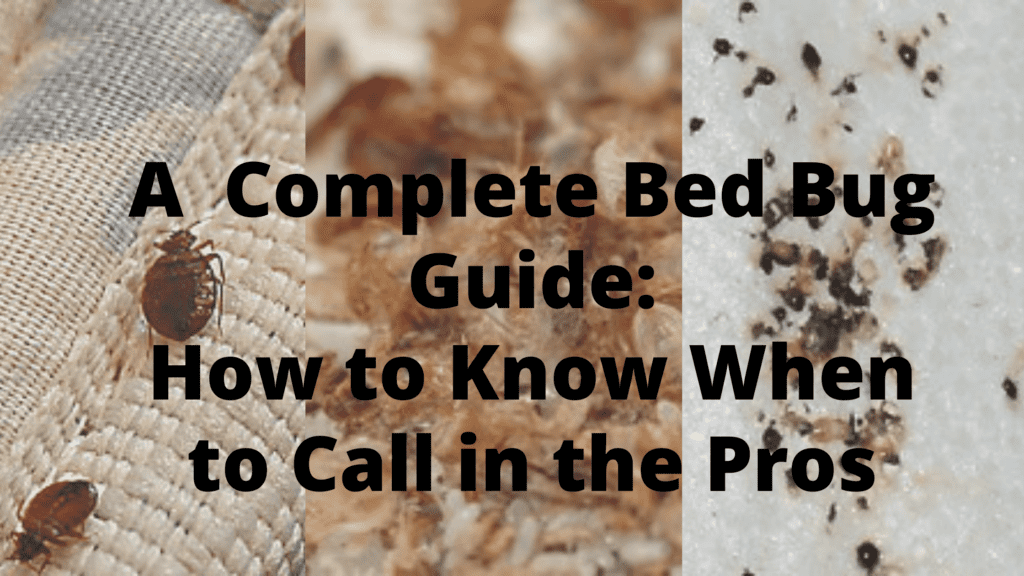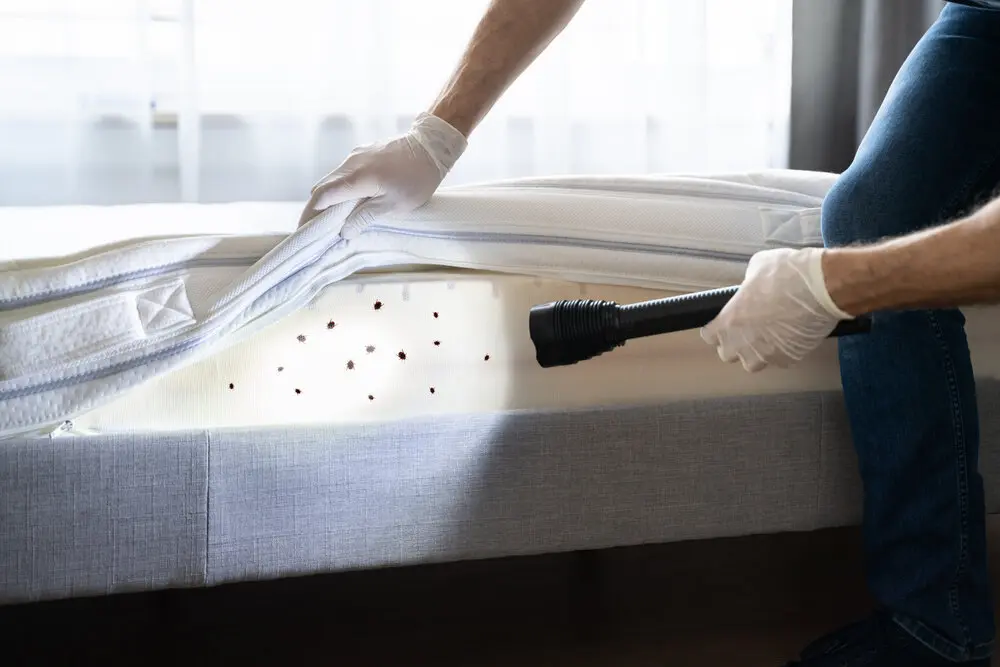Expert Pest Control Arlington VA: Comprehensive Solutions for Your Property
Expert Pest Control Arlington VA: Comprehensive Solutions for Your Property
Blog Article
Get Educated Regarding the Sorts Of Pest Control Techniques and Their Advantages for Home Owners
Understanding the different parasite control techniques offered to homeowners is necessary for effective insect administration. House owners that are knowledgeable can make tactical selections that not only address bug concerns yet additionally improve the overall top quality of their living setting.
Chemical Bug Control Methods
Chemical pest control approaches are an essential element of integrated parasite monitoring techniques for homeowners looking for effective solutions to pest problems. These techniques involve the application of chemical compounds developed to remove or discourage pests that intimidate individual residential or commercial property, wellness, and comfort. Common chemicals utilized include insecticides, fungicides, herbicides, and rodenticides, each tailored to target specific insects.
The primary advantage of chemical bug control is its rapid efficiency; many formulas give immediate outcomes, lowering pest populations substantially quickly. Furthermore, breakthroughs in chemical formulations have actually brought about products that are much more eco-friendly and have lower toxicity degrees for non-target microorganisms when used correctly.

Organic Bug Control Methods
Natural parasite control methods have gained prominence as home owners seek safer and a lot more sustainable choices to standard chemical approaches. Organic insect control strategies use all-natural predators, bloodsuckers, or microorganisms to take care of bug populations successfully. This method is not just eco-friendly however additionally lessens the risk of damage to non-target varieties, including beneficial bugs and wild animals.
One of one of the most common biological control approaches involves presenting all-natural predators right into the setting. For instance, ladybugs can be made use of to regulate aphid populations, while nematodes target soil-dwelling bugs like grubs. Additionally, parasitoids-- microorganisms that survive or within a host-- can be employed to manage particular parasite species by laying eggs inside them, eventually bring about their demise.
Another technique is making use of biopesticides, which are originated from natural materials such as bacteria, minerals, or plants (bed bug exterminator). These items can properly target pests while positioning very little danger to human beings and family pets. Generally, organic parasite control strategies provide property owners with an effective ways of bug management that lines up with ecological principles, promoting a healthier living setting while lowering reliance on synthetic chemicals
Mechanical Insect Control Strategies
Mechanical insect control techniques encompass a variety of methods that physically prevent or remove parasites without using chemicals. These strategies are specifically beneficial for homeowners looking for eco-friendly choices while making sure the security of their living spaces.
One common method is using obstacles, such as displays, traps, and nets, which stop insects from entering homes or certain areas. Installing home window screens can properly keep pests out, while utilizing physical obstacles around gardens can prevent larger bugs like rabbits or deer. Additionally, mechanical catches made for rats can catch and remove these bugs without the need for hazardous substances.
An additional effective method involves using brooms and vacuum cleaners to eliminate parasites directly from surface areas. Regular cleaning and upkeep can considerably lower pest populations by removing food sources and hiding places. Utilizing gadgets like ultrasonic link parasite repellents can discourage different parasites via sound waves that are undesirable to them but inaudible to people.
Social Pest Control Practices
Cultural insect control methods concentrate on changing the environment and management strategies to create conditions that are less for pest problems. These techniques are basic in keeping a well balanced ecosystem and decreasing the dependence on chemical interventions. By altering agricultural practices, property owners can successfully prevent bugs while advertising plant wellness.
One typical technique consists of plant rotation, which interrupts the life cycles of insects by changing the sorts of plants grown in a specific area (bed bug exterminator). This not just reduces pest populations but also improves dirt wellness. Furthermore, intercropping-- planting diverse plants in distance-- can puzzle bugs and decrease their ability to locate their recommended host plants
Water monitoring is one more important element of cultural techniques. Appropriate irrigation techniques can prevent standing water, which offers as a reproduction ground for mosquitoes and various other bugs. Preserving cleanliness in and around the home, such as consistently eliminating debris and food waste, can dramatically reduce parasite tourist attraction.
Incorporating these social practices right into a comprehensive parasite administration approach enables homeowners to produce an environment that normally discourages insects, thereby boosting the effectiveness of other control approaches while promoting lasting horticulture and landscaping.

Integrated Insect Administration Approaches
Integrated Parasite Monitoring (IPM) stands for a holistic method that incorporates numerous strategies to effectively manage insect populations while reducing environmental effect. This method incorporates biological, cultural, physical, and chemical methods to accomplish sustainable pest control. By evaluating pest populations and their natural enemies, IPM stresses surveillance and recognizing parasites prior to carrying out control procedures.
Among the core principles of IPM is the use of thresholds, which establish the degree of parasite task that calls for intervention. This guarantees that treatments are used just when needed, decreasing the reliance on chemical pesticides. Biological control methods, such as introducing all-natural killers or parasites, operate in combination with cultural practices like plant turning and habitat manipulation to interfere with pest life process.
Additionally, IPM encourages making use of least-toxic chemical choices when intervention is essential, focusing on products that pose marginal danger to non-target microorganisms and the atmosphere. For home owners, adopting IPM approaches not only improves the efficiency of parasite management however also promotes a much healthier living atmosphere, fostering biodiversity and lowering chemical exposure. Inevitably, IPM equips property owners to make enlightened decisions that stabilize insect control with eco-friendly obligation.
Final Thought
In conclusion, understanding the various view it now pest control methods encourages homeowners to make enlightened choices pertaining to pest administration. Each method-- chemical, biological, mechanical, cultural, and incorporated parasite monitoring-- uses unique benefits that provide to various requirements and preferences.
Comprehending the numerous check over here parasite control approaches offered to property owners is important for effective parasite monitoring.Chemical insect control methods are a crucial component of incorporated bug administration techniques for homeowners looking for efficient solutions to pest problems. In general, organic bug control techniques provide house owners with an effective methods of bug management that straightens with environmental principles, advertising a healthier living setting while decreasing dependence on synthetic chemicals.
Social insect control techniques focus on changing the environment and monitoring techniques to produce conditions that are much less conducive to pest invasions.In conclusion, comprehending the various bug control approaches equips homeowners to make educated choices concerning pest monitoring.
Report this page